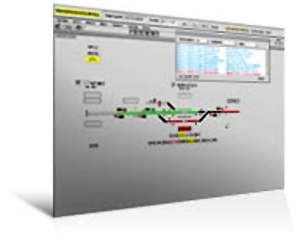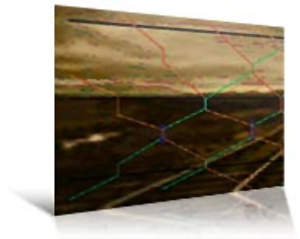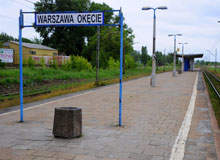At Cactus we have more than 40 years of experience in complex automation solutions and have delivered traffic management systems (TMS) to Nordic railway operators for more than 15 years. We have expert knowledge of reliability engineering and strong process know-how of rail-bound traffic.
Another Cactus quality is our dedication to project implementation and keeping to our promised delivery times. Our commitment to customers is demonstrated through our long-term relationship with Storstockholms Lokaltrafik, a railway company that transports more than 600,000 passengers every day. Cactus is responsible for TMS installations for four of the local railways and an extensive alarm information system for the subway.
User-friendly railway traffic management
Cactus TMS delivers efficient and automated traffic management with functions such as:
- Centralised traffic control
- Automatic route setting
- Train describer system
- High capacity for storing and registering alarms and events for log and future replay
Cactus TMS supports a wide range of programmable logic controllers and remote terminal units. TMS is also adaptable, standardised and supports interlockings such as Ebilock (850, 950, 500) and Union Switch (ML II). We can also develop new protocols at the customer’s request.
Centralised traffic control (CTC)
CTC allows traffic control and supervision to be combined in a common operations centre. Traffic, routing and timetables are all managed from one single location.
CTC uses transparent and distributed operational data for improved internal communication and a higher degree of automation. It also enables the user to observe a clear overview of both the technical and the operational situation by the means of user-friendly graphical interfaces. Overall CTC enables improved punctuality and track usage without additional investments.
Automatic route setting (ARS)
Due to the advanced technology used in ARS, predictive routing is performed in accordance with the timetable and optimised routing is performed according to specific situations. In the case of conflicts, evaluated alternatives are at the dispatcher’s disposal.
ARS allows operators to have interactive and direct access to train routing functions and a large number of tuning parameters. This functionality relieves the operator from repetitious tasks and enables him to perform other tasks.
Train describer system (TDS)
The purpose of the train description is to identify the train at a particular place and to keep track of its progress. This identification allows the operators to follow the progress of trains and enables them to detect the origin, destination and characteristics of trains. Train describer systems are important tools for efficient traffic management and provide the essential backbone for traffic supervision, automatic train routing and passenger information systems.
Fault logging, alarms and warning messages
The TMS is a monitoring and information system, and the system is capable of identifying system operating problems and equipment fault conditions.
The TMS provides both the operator and the system maintainers with visual and audible indications of fault and warning conditions. The operator is informed of the presence of a problem and the nature of it. The operator’s alarms are normally presented at his control unit.
The alarm is a flashing display on the monitor accompanied by an audible warning. The operator must acknowledge the alarm by pressing an acknowledge button. Five million events are kept online for instant retrieval in a storage archive for one year and can be instantly replayed.
Our railway traffic management system enables extensive search functions and comprehensive statistical reports. Any faults are quickly identified and available for future operations analysis. The extensive logging and tracking functions of our TMS allow for high-quality surveillance and communication.
Flexibility and customer service
Our dedicated teams are familiar with designing and tailoring systems according to our customers’ special conditions. Cactus TMS is based on standard hardware and software developed in-house. This gives us powerful opportunities to modify our software swiftly and at a reasonable cost, in order to fulfil our customers’ requirements.
Train graph (time/distance diagram)
The traingraph is the ideal representation of all train services in a specific time period in context, and hence superbly suited for planning and dispatching on the open line. The train graph can be printed and supports zooming and panning.







